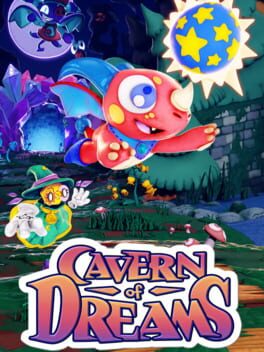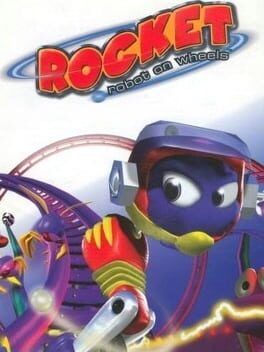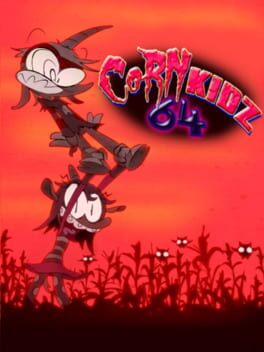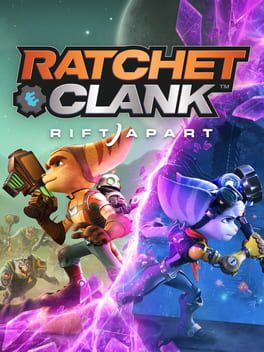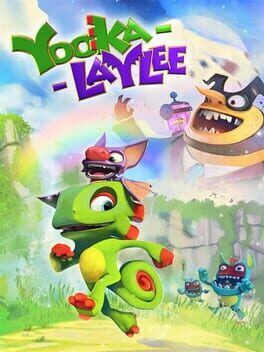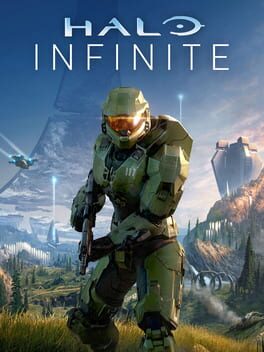habitablestorm3
2022
2023
I love this game. Cavern of Dreams is part of a trifecta of 2023 low poly 3D platformers that are must-plays for genre fans (the other two being Corn Kidz 64 and Pseudoregalia). Each game has its own strengths. Cavern of Dreams particularly nails exploration and atmosphere while taking a bit to get going in the platforming department.
Cavern of Dreams takes a lot of inspiration from Banjo-Kazooie for gameplay (except there's no combat whatsoever) and at times even matches the quality. The colorful levels are loaded with interconnected puzzles, fun NPCs, and plenty of easter eggs and hints scattered throughout. Those familiar with methodically unraveling puzzles and searching every nook and cranny of a level in Banjo-Kazooie will immediately feel at home in Cavern of Dreams.
Cavern of Dreams really shines with a surreal atmosphere that is both whimsical and vaguely disturbing, reminiscent of other early 3D games. You will get to know the Cavern in your adventure, but a sense of wonder will persist throughout and linger thereafter. The different worlds are lightly inhabited, enough that they are not baron, but well short of teeming with life and energy. Wandering around the levels often reveals side areas with no puzzles to solve or items to collect, just hints of goofy/creepy histories that aren't important to your adventure, but exist all the same. This atmosphere, my favorite part of Cavern of Dreams, immensely accentuates the explorational platforming.
My only real gripe with Cavern of Dreams is I'm left wanting more. With 40 multicolored Eggs (this game's version of Jiggies or Power Stars) to collect, the game took me about five hours to beat and eight hours to 100%. Short runtimes have plenty of advantages, but Cavern of Dreams was paced so that it really hit its gameplay stride right at the end. Like Corn Kidz 64, if Cavern of Dreams were about twice as long, I wouldn't hesitate to place it right alongside the best of the early collectathons that inspired it. As is, it's still a wonderful game that I strongly recommend to fellow 3D platformer fans who love the genre's early days.
Cavern of Dreams takes a lot of inspiration from Banjo-Kazooie for gameplay (except there's no combat whatsoever) and at times even matches the quality. The colorful levels are loaded with interconnected puzzles, fun NPCs, and plenty of easter eggs and hints scattered throughout. Those familiar with methodically unraveling puzzles and searching every nook and cranny of a level in Banjo-Kazooie will immediately feel at home in Cavern of Dreams.
Cavern of Dreams really shines with a surreal atmosphere that is both whimsical and vaguely disturbing, reminiscent of other early 3D games. You will get to know the Cavern in your adventure, but a sense of wonder will persist throughout and linger thereafter. The different worlds are lightly inhabited, enough that they are not baron, but well short of teeming with life and energy. Wandering around the levels often reveals side areas with no puzzles to solve or items to collect, just hints of goofy/creepy histories that aren't important to your adventure, but exist all the same. This atmosphere, my favorite part of Cavern of Dreams, immensely accentuates the explorational platforming.
My only real gripe with Cavern of Dreams is I'm left wanting more. With 40 multicolored Eggs (this game's version of Jiggies or Power Stars) to collect, the game took me about five hours to beat and eight hours to 100%. Short runtimes have plenty of advantages, but Cavern of Dreams was paced so that it really hit its gameplay stride right at the end. Like Corn Kidz 64, if Cavern of Dreams were about twice as long, I wouldn't hesitate to place it right alongside the best of the early collectathons that inspired it. As is, it's still a wonderful game that I strongly recommend to fellow 3D platformer fans who love the genre's early days.
2023
If I had a nickel for every extremely good low poly budget-priced indie 3d platformer starring a goat that launched in 2023, I'd have two nickels. Play pseudoregalia. Play corn kidz 64.
Pseudoregalia develops one of the tightest, most satisfying 3d platforming movesets I've ever seen through standard Metroidvania progression. It works very, very well. Exploring the hazy, dreamy low poly castle is a treat, though the game desperately needs a map.
Pseudoregalia develops one of the tightest, most satisfying 3d platforming movesets I've ever seen through standard Metroidvania progression. It works very, very well. Exploring the hazy, dreamy low poly castle is a treat, though the game desperately needs a map.
Rocket: Robot on Wheels is a strong first outing for Sucker Punch that unfortunately never left much of a legacy.
A collectathon, the game utilizes Banjo-Kazooie's approach to level design by focusing on small-scale levels with collectibles (in this case, tickets and tokens instead of puzzle pieces and music notes) that you can grab all in your first go -- no move-gating like you see in Banjo-Tooie and DK64. The smaller scale allows the game's unique moveset and surprisingly robust physics engine to take center stage. Players need to manage Rocket's speed carefully, as conserving momentum plays a key role in many tricky platforming situations. The game otherwise tasks players with using magnets, tractor beams, an ice ray, and plenty more in a puzzle- and physics-laden venture. At its high points, Rocket: Robot on Wheels is genuine, interesting, and loads of fun.
Taking only about 9 hours to 100%, Rocket: Robot on Wheels adds up to a lean, exciting experience that stands out amidst other more traditional fifth-gen 3D platformers, even if its flavor of puzzly physics-based platforming doesn't ultimately reach the same quality as run-and-jump classics like Banjo-Kazooie and Mario 64.
Similarly, there are a few sour points that hold the game back from the top of the genre. The levels are fairly lifeless aside from generic enemies that can be dispatched with one one tractor beam ground pound. When combat isn't a focus, enemies don't contribute to a level feeling "populated." The level design as a whole is not especially colorful or memorable, which diminishes the quintessential collectathon experience of wandering around a 99% completed level searching in vain for that last missing collectible. Finally, while the game's physics-based approach to movement is overall very impressive, the occasional vehicle or move is simply clunky, unresponsive, or just plain boring to use.
If you like collectathons and can tolerate some early 3D game jank, Rocket: Robot on Wheels deserves a look, both for its quality and for its unique approach to the genre.
A collectathon, the game utilizes Banjo-Kazooie's approach to level design by focusing on small-scale levels with collectibles (in this case, tickets and tokens instead of puzzle pieces and music notes) that you can grab all in your first go -- no move-gating like you see in Banjo-Tooie and DK64. The smaller scale allows the game's unique moveset and surprisingly robust physics engine to take center stage. Players need to manage Rocket's speed carefully, as conserving momentum plays a key role in many tricky platforming situations. The game otherwise tasks players with using magnets, tractor beams, an ice ray, and plenty more in a puzzle- and physics-laden venture. At its high points, Rocket: Robot on Wheels is genuine, interesting, and loads of fun.
Taking only about 9 hours to 100%, Rocket: Robot on Wheels adds up to a lean, exciting experience that stands out amidst other more traditional fifth-gen 3D platformers, even if its flavor of puzzly physics-based platforming doesn't ultimately reach the same quality as run-and-jump classics like Banjo-Kazooie and Mario 64.
Similarly, there are a few sour points that hold the game back from the top of the genre. The levels are fairly lifeless aside from generic enemies that can be dispatched with one one tractor beam ground pound. When combat isn't a focus, enemies don't contribute to a level feeling "populated." The level design as a whole is not especially colorful or memorable, which diminishes the quintessential collectathon experience of wandering around a 99% completed level searching in vain for that last missing collectible. Finally, while the game's physics-based approach to movement is overall very impressive, the occasional vehicle or move is simply clunky, unresponsive, or just plain boring to use.
If you like collectathons and can tolerate some early 3D game jank, Rocket: Robot on Wheels deserves a look, both for its quality and for its unique approach to the genre.
2023
new bar for retro inspired 3d platformers just dropped. corn kidz 64 feels equal parts familiar and fresh. familiarity stems from the low poly graphics and welcome collectathon design and humor reminiscent of rare's best n64 outings. freshness comes from the game's crisp, squishy, and stretchy animations, and an incredible moveset that uses headbutts, dig slams, and wall slides to great effect.
while i wish the game was like twice as long, the content we have is top tier for the genre. my only other nitpick is there are too many random invisible walls blocking out-of-the-box puzzle solutions.
play corn kidz
while i wish the game was like twice as long, the content we have is top tier for the genre. my only other nitpick is there are too many random invisible walls blocking out-of-the-box puzzle solutions.
play corn kidz
2021
Demon Turf is a hodgepodge of great ideas and self-sabotage. The game's strong moveset and early linear levels are great, but momentum dissipates as the game leans into half-baked overly long levels and terrible combat. Top that off with an unnecessarily lengthy path to the final boss, and I can't see myself finishing this one.
The moveset is unique and fun to handle thanks to a plethora of jumps, transformations, and a deliberate pace that provides full control of Beebz, the player character. Unfortunately, the moveset best accommodates moments of linear platforming in which you try to use your many movement options to skillfully and quickly navigate a perilous, narrow path while setting your own checkpoints (another of Demon Turf's quirks -- you set your own checkpoints). It's less fun to aimlessly wander through open levels and slap around enemies in a repetitive, slippery combat system that adds nothing to the game but time. For unknown reasons, Demon Turf quickly loses interest in linear platforming, and I can't stomach any more long, open levels.
Here is the math that made me drop the game: you get a battery each time you finish a level. There are 28 levels and 28 "remixes" that, well, remix the main game's levels, but not enough to feel fresh or different. You need 50 batteries for the pleasure of facing the final boss. You nearly need to play the game twice to beat it, but I've realized I don't even want to play it once. I really wanted to like this one.
(I will, however, check out Neon Splash, which seems to provide a quick set of linear levels that should be a much better use of Beebz' moveset).
The moveset is unique and fun to handle thanks to a plethora of jumps, transformations, and a deliberate pace that provides full control of Beebz, the player character. Unfortunately, the moveset best accommodates moments of linear platforming in which you try to use your many movement options to skillfully and quickly navigate a perilous, narrow path while setting your own checkpoints (another of Demon Turf's quirks -- you set your own checkpoints). It's less fun to aimlessly wander through open levels and slap around enemies in a repetitive, slippery combat system that adds nothing to the game but time. For unknown reasons, Demon Turf quickly loses interest in linear platforming, and I can't stomach any more long, open levels.
Here is the math that made me drop the game: you get a battery each time you finish a level. There are 28 levels and 28 "remixes" that, well, remix the main game's levels, but not enough to feel fresh or different. You need 50 batteries for the pleasure of facing the final boss. You nearly need to play the game twice to beat it, but I've realized I don't even want to play it once. I really wanted to like this one.
(I will, however, check out Neon Splash, which seems to provide a quick set of linear levels that should be a much better use of Beebz' moveset).
The visual fidelity makes Rift Apart look like a Disney movie, but the lack of art direction or discernible personality in the story and character beats makes that Disney movie Wreck-It Ralph 2.
The gameplay is much better, but Rift Apart often fails to put its outstanding arsenal and gunplay (emphasized by the Dualsense’s healthy assortment of rumbles, pew-pews, and rat-a-tat-tats) to good use before the late game, where new enemy types and guns make for more exciting brawls
The gameplay is much better, but Rift Apart often fails to put its outstanding arsenal and gunplay (emphasized by the Dualsense’s healthy assortment of rumbles, pew-pews, and rat-a-tat-tats) to good use before the late game, where new enemy types and guns make for more exciting brawls
2017
Time to beat: 13 hours
Date beaten: November 9, 2021
Platform: XB1
Yooka-Laylee is a lovely retro homage loaded with hiccups. It doesn’t quite hit the highs of a classic Rare collectathon, but boy does it hit the lows.
+ Charm through the roof. The music, art direction, characters, and writing all nail the cozy, hilarious vibes of classic Rare
+ While there are only five worlds, they’ve each got enough content and visual variety to be a treat to explore and discover
+ Plenty of fun challenges and gameplay moments that ultimately outweigh the repetitive or poorly done parts
- The desire to explore is weakened by reused challenges, world expansion, move-gating, and disorientingly large levels
- Janky controls and frustrating mechanics pop up several times, such as with flight, minecart levels, the stamina meter, and those atrocious arcade games. And the final boss is Boring with a Capital B
- Yooka-Laylee is a Voltron of the worst aspects of old Rare collectathons. Banjo-Kazooie’s quiz show, DK64’s obtuse final boss, and Tooie‘s obsession with negative space (Note: since I originally wrote this review in 2021, I have concluded that Tooie does negative space well, but Yooka-Laylee definitely does not) are all back in force.
Date beaten: November 9, 2021
Platform: XB1
Yooka-Laylee is a lovely retro homage loaded with hiccups. It doesn’t quite hit the highs of a classic Rare collectathon, but boy does it hit the lows.
+ Charm through the roof. The music, art direction, characters, and writing all nail the cozy, hilarious vibes of classic Rare
+ While there are only five worlds, they’ve each got enough content and visual variety to be a treat to explore and discover
+ Plenty of fun challenges and gameplay moments that ultimately outweigh the repetitive or poorly done parts
- The desire to explore is weakened by reused challenges, world expansion, move-gating, and disorientingly large levels
- Janky controls and frustrating mechanics pop up several times, such as with flight, minecart levels, the stamina meter, and those atrocious arcade games. And the final boss is Boring with a Capital B
- Yooka-Laylee is a Voltron of the worst aspects of old Rare collectathons. Banjo-Kazooie’s quiz show, DK64’s obtuse final boss, and Tooie‘s obsession with negative space (Note: since I originally wrote this review in 2021, I have concluded that Tooie does negative space well, but Yooka-Laylee definitely does not) are all back in force.
2021
Over the last few weeks, I've jumped between custom games bolstered by a war chest of colorful community-made maps and modes, online multiplayer matches that ran smoothly and had good map and mode variety, and a Forge mode that currently has me decorating a neighborhood of gingerbread houses I built from scratch for a winter wonderland map. Amidst all of that, something hit me: Halo Infinite is good now. The base gameplay is as strong as ever, and Halo Infinite finally has the content, custom games scene, and functionality it deserves.

